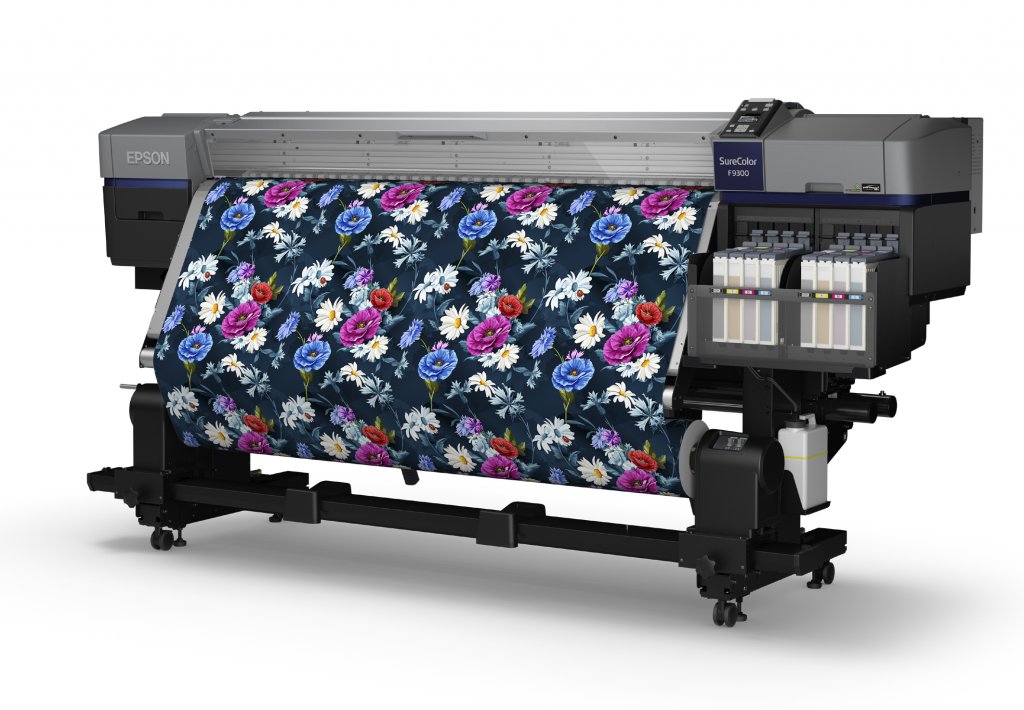Sublimation
- Sublimation is a process of transferring prints from the solid to the gaseous state, without going through the liquid state, using sublimatic ink and heat;
- Sublimation is applied in the customization of various products, such as t-shirts, caps and pillows, providing vivid and lasting colors;
- To obtain the expected results, it is necessary to use polyester fabrics or fabrics with a high percentage of polyester, in addition to correctly adjusting the pressure and pressing time in the thermal machine;
- Additional precautions include cleaning and preparing the heat press, protecting unprinted areas, properly storing the sublimation paper, and performing tests and samples before large-scale production.
If you want to work with personalized clothing sales, knowing what sublimation is might be interesting for you. This is because this technique is intended to print shirts and other types of materials using an inkjet printer or a thermal press. As we provide the service of sublimation printing in Dallas, so in the following article you will get the detailed information.
Sublimation is applied using sublimation ink. This ink is deposited on a sublimatic paper through a printer. After drying, the paper is ready to be used in a thermal press together with the fabric or material to be printed, such as shirts, cushions, caps, towels, among others.
This is a tool that is widely used to create and market products, since sublimation allows clothes to have bright and durable prints .
Therefore, if you want to understand more about sublimation in order to expand your company’s market, continue reading this article!
What is sublimation?
Sublimation is a printing method that transfers a design onto a material or fabric using ink and heat. Basically, this is a great process that allows for vibrant, colorful, complete, and durable prints on t-shirts.
Sublimation occurs when sublimation paper, with dry ink, is subjected to a temperature of approximately 185°C. In the heat, the paint particles turn into a gas and penetrate the fabric, adhering to it.
The result is a bright print with vivid colors , giving the impression that the fabric was produced with that color or print.
This method offers a high level of customization, and the investment in equipment is relatively low compared to other methods such as screen printing.
It is possible to customize a single piece and still make a profit from it. For this reason, many people are investing in sublimation as a promising business, allowing the customization of a wide variety of products – mainly T-shirts.
How does sublimation work?
Generally speaking, sublimation is a chemical process in which a solid turns into a gas without going through the liquid stage. In the same way, in the case of sublimation, the ink printed on specific paper turns into gas, which melts into the fabric. As a result, you have a printed T-shirt in a few seconds .
However, it is important to follow the manufacturer’s instructions for the equipment and products used, as specific configurations may vary. Also, remember that sublimation only works on fabrics that contain polyester in their composition, as it is the polyester fiber that allows sublimation ink to adhere.
Briefly, the sublimation process works like this:
- A drawing is created and printed on special paper;
- The design is fused with a special T-shirt by means of the heat machine;
- The shirt is printed without cracks and in bright colors.
Here’s how these steps work in practice:
design preparation
First, the desired drawing is created. This can be done manually or using graphic design software. The most important thing is that the artwork is original , so that your business does not face copyright issues.
The design is printed on a special sublimation paper using a dedicated sublimation printer. Sublimation paper has a coated layer that allows the ink to transfer onto the fabric during the sublimation process.
In addition, it is important to emphasize that the chosen paints need to be suitable for this purpose, so you will get vibrant and durable colors.
T-shirt pre-treatment
Before sublimation, the T-shirt needs to go through a pre-treatment process . Remember that sublimation works best on polyester fabrics or fabrics with a high percentage of polyester in their composition.
Fabric treatment involves applying a pre-treatment spray over the area where the print will be transferred. This process helps to improve the adhesion of the sublimatic ink on the surface.
press preparation
The heat press must be set to the proper temperature and time for the sublimation process. Generally, the temperature varies between 180°C and 210°C, depending on the type of ink and fabric used.
T-shirt and paper positioning
The T-shirt is placed in the heat press, and the printed sublimation paper is positioned with the design facing the fabric. It’s important to make sure the paper is aligned well and there is no gap between the paper and the shirt.
pressing
The heat press is closed, applying pressure on the T-shirt and sublimation paper for about 30 seconds. The heat from the press causes the ink to evaporate and turn into gas. The gas, in turn, penetrates the fibers of the fabric and solidifies again, permanently fixing itself in it.
Cooling and finishing
After adequate transfer time, the heat press is opened and the T-shirt is cooled so that the ink completely solidifies on the fabric. Then the sublimation paper is carefully removed, revealing the design transferred onto the t-shirt. To ensure full ink transfer, it’s important to remove the paper while it’s still hot .
Finally, the print will already be transferred to the shirt, which can be folded and packaged for sale.
Exclusive tips in your emailSubscribe to the Nuvemshop newsletter and receive weekly exclusive content on Marketing, Sales, e-commerce management and more, directly to your email .
What equipment is needed for sublimation?
To start working with sublimation, you will basically need a computer, a sublimation printer and a thermal press . Of course, a stock of good quality T-shirts is also needed for the service to go as planned and please customers.
What are the advantages of sublimation?
As seen throughout the article, sublimation is a perfect technique for those who want to sell quality printed T-shirts. Although we have mentioned some benefits of the resource in this text, check out, below, other advantages of adhering to the technique:
- Provides vibrant colors;
- Soft touch on the shirts;
- Prints without cracks;
- You can add endless elements on the T-shirt, such as rhinestones , sparkles and others;
- Printed T-shirts never go out of style.
What precautions to take during T-shirt sublimation?
T-shirt sublimation offers a wide range of customization possibilities , allowing you to create unique and vibrant prints. However, it is essential to practice, adjust the temperature and time settings of the heat press, and experiment with different art, fabric, and ink combinations to get the best results.
Check out some additional information about sublimation of t-shirts below :
T-shirt type
Sublimation works best on light colored T-shirts as the sublimation dye is transparent and does not completely cover the color of the fabric. Light colors such as white or pastel tones provide a more vibrant result.
However, it is possible to sublimate dark colored T-shirts, but the print will have a softer, more translucent effect.
print orientation
Decide if you want to print only on the front of the shirt, or if you also want to print on the back, sleeves, or other areas. Be sure to properly position the shirt in the heat press to ensure the print is aligned to your preference.
details and seams
Please note that sublimation is not able to print directly on areas where there are seams, such as collars and sleeves . These areas may be blank or have a partial transfer.
Therefore, it is important to adjust the artwork and placement of the print to avoid problems in areas where there are seams.
Quantity of t-shirts
Sublimation is suitable for both small-scale and large-scale production. You can customize a single shirt or carry out mass productions, depending on your needs and your available equipment.
press cleaning
Before starting sublimation, make sure the heat press is clean and free of ink or paper residue. Clean the press plates and check for dirt or obstructions that could affect print quality.
pressure adjustment
The pressure applied by the heat press is crucial for proper ink transfer. Make sure the pressure is set correctly according to the type of T-shirt and sublimation paper used.
Insufficient pressure can result in a poor print , while excessive pressure can cause image distortions or fabric damage .
pressing time
In addition to temperature, pressing time is also important. Follow the sublimation paper and ink manufacturer’s instructions to determine the optimal pressing time.
Too little time can result in incomplete ink transfer, while too much time can lead to ink or fabric burn-in.
Non-stamped area protection
If you are only printing a specific part of the shirt, such as the front, protect the unwanted areas with thermal paper or teflon film . This prevents sublimation ink from accidentally transferring to other parts of the shirt.
paper storage
Sublimation paper is sensitive to moisture and heat . Keep it stored in a dry and cool place, away from direct sunlight. Avoid bending the paper, as this can cause unwanted marks on the print.
Tests
Before carrying out large-scale production, test samples to check print quality and adjust settings if necessary. This avoids problems throughout production and ensures a satisfactory end result.
After treatment
After sublimation is complete, allow the shirt to cool completely before handling or packaging. This prevents damage to the newly transferred stamp. Also, it is recommended to wash the sublimated shirt separately before wearing or selling it to remove any loose ink residue.
By following all these precautions during the t-shirt sublimation process, you will guarantee high quality prints, durability and customer satisfaction . Remember to read and follow the manufacturer’s specific instructions for the equipment, ink, and sublimation paper you are using.



